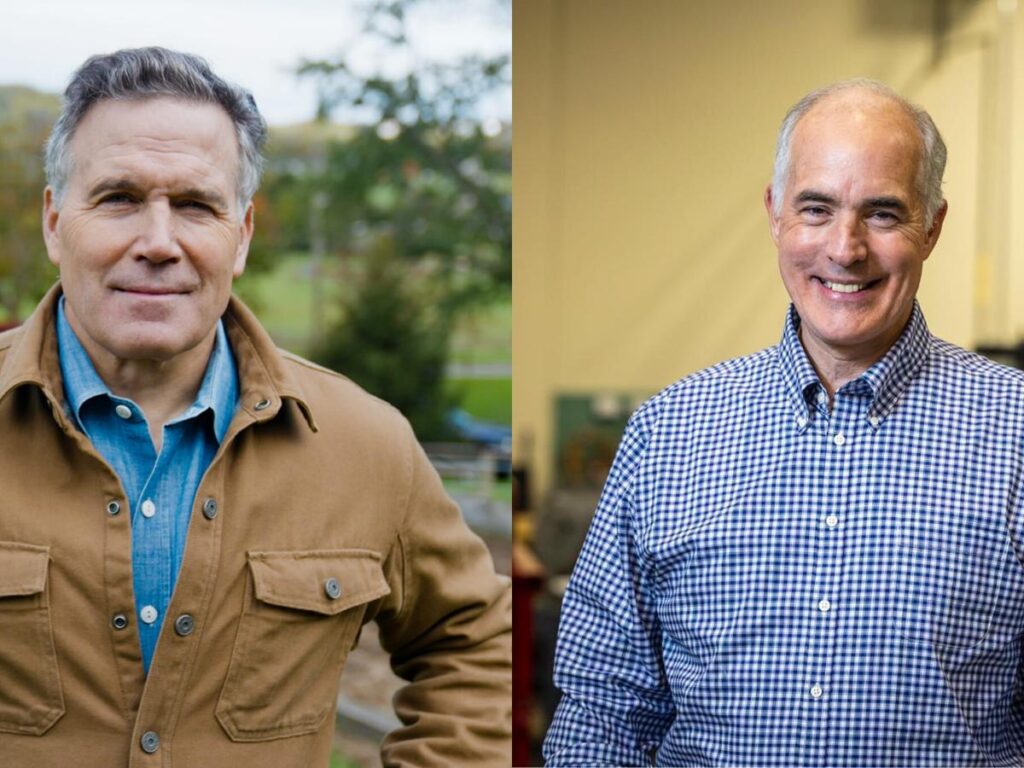HARRISBURG — By many measures, the economy is thriving.
Unemployment is low, the labor market is strong, and inflation has fallen significantly after reaching a 40-year high in 2022.
But you wouldn’t know it from listening to the major party candidates vying for Pennsylvania’s Senate seat. They have induced deep-seated fears among voters about widespread price increases.
Incumbent Democratic Party Bob Casey, who has been president since 2007, blames the soaring prices of essential goods on the greed of “big conglomerates.” Republican challenger and former hedge fund CEO Dave McCormick, who lost the 2022 Republican primary, said in a debate earlier this month that the economy is “sluggish” and that “prices are low.” Rising prices are putting enormous pressure on most households.”
Nearly 70% of respondents to the Spotlight PA poll said jobs, wages and the economy were the most important issues in this election.
Casey’s campaign did not respond to specific questions from Spotlight PA about the senator’s position, but in a statement it said the Democratic Party is “exploiting workers and putting more money in the pockets of Pennsylvanians.” “We are leading the fight to hold large corporations accountable for spending so much of their money on them.” ”
McCormick’s campaign did not respond to Spotlight Pennsylvania’s questions.
Here are the candidates’ positions on economic issues:
inflation
As the U.S. economy recovered from the pandemic, inflation soared to levels not seen since the early 1980s. Dramatic increases in food, car and rent prices have strained household budgets and soured many voters’ views of the Biden administration’s economic response.
However, since peaking in the summer of 2022, inflation has gradually cooled. In September, the Federal Reserve cut interest rates, indicating that the central bank no longer views inflation as a major concern. But for consumers, months of high inflation are still fresh from memory and markets, with prices for many goods still higher than they were before the pandemic.
McCormick blamed the rise in inflation on federal spending, particularly the $1.9 trillion stimulus package known as the American Rescue Plan that President Joe Biden signed into law in March 2021. (In 2020, then-President Donald Trump also signed two economic stimulus packages worth more than $3 trillion.) )
McCormick said federal stimulus spending is the “primary driver” and “root cause” of rising inflation in 2021 and 2022.
Experts say the situation is more complicated.
Economists generally agree that the American Rescue Plan contributed to inflation, but estimates vary on exactly how much. But they also agree that other factors likely played a larger role, including Russia’s invasion of Ukraine, which led to supply chain disruptions, labor shortages and soaring food and energy prices. . Even critics of the American Rescue Plan generally admit that even if it had been smaller, the United States would still have seen an increase in inflation, a global phenomenon.
“The perfect storm of everything that could cause prices to rise happened at the same time,” said Ahmed Rahman, an associate professor of economics at Lehigh University. “That’s why there’s so much disagreement about the root cause.”
Supporters say the American Rescue Plan worked. The United States avoided a recession, unemployment fell, and the economy recovered from the pandemic faster than many other countries.
Mr. Casey developed a different explanation for inflation. He has made so-called “greedflation” a central theme of his campaign, claiming that large companies in some sectors have used inflation as an excuse to further raise prices and boost profit margins.
“Companies argue that prices are going up only because costs are going up,” he said in a speech at the Democratic National Convention in August. “Prices are going up because companies are trying to raise prices.” (He said it was aimed at businesses.)
Corporate profits have increased significantly in the years since the pandemic, but it’s unclear how much this contributed to higher overall inflation. A study by the Federal Reserve Bank of Kansas City found that growth in business “markups” (the difference between what it costs to produce something and the price companies charge for that product) will be the “main driver” of inflation in 2021. It turned out to be a factor. However, other Federal Reserve banks have reached different conclusions.
Mr. Casey introduced a bill to crack down on greedflation by banning “grossly excessive” price increases. The exact threshold is not specified. He compared the bill to anti-price gouging bills already being considered in many states, although state-level bans typically only apply in cases of disaster or emergency.
tax
In 2017, President Trump signed a major overhaul of the U.S. tax system.
The Tax Cuts and Jobs Act lowered the top corporate tax rate from 35% to 21%, lowering income tax rates for most Americans, among many other changes.
An analysis by the Tax Policy Center, a think tank in Washington, D.C., shows that high-income taxpayers benefit most from personal tax cuts.
The corporate tax cut was made permanent, but the personal income tax cut will expire at the end of 2025.
If Congress does nothing, about two-thirds of taxpayers will see a tax increase, said Erica York, senior economist and research director at the Tax Foundation, a think tank that generally advocates for tax cuts. says.
McCormick wants to keep both individual and corporate tax cuts in place, saying they are necessary to keep America competitive.
Casey, like other Democrats in the U.S. Senate, voted against the bill in 2017, calling it “a massive tax giveaway to the ultra-rich at the expense of the middle class.” did. He wants to repeal corporate tax cuts, but has indicated he supports keeping some personal tax cuts in place.
“If we are going to implement tax reform in 2025, it will have to be a tax cut for the middle class,” he said at a debate on October 3.
trade
As president, Trump imposed tariffs (essentially taxes on imported goods) on steel and aluminum. In a rare moment of unity, Mr. Casey supported the tariffs, saying they would help Pennsylvania steelmakers.
McCormick said during the Oct. 3 debate that he supports implementing tariffs “strategically to ensure American workers receive a fair deal.”
Casey urged the Biden administration to maintain President Trump’s tariffs on imported steel and aluminum, but said tariffs “if used in a targeted manner” would help workers and level the playing field. I agreed that it could be done.
US Steel
Both candidates oppose the pending sale of Pittsburgh-based U.S. Steel to Japanese company Nippon Steel, which has become a political flashpoint. Biden, Vice President Kamala Harris and Trump also oppose the deal.
Japan announced it would invest billions of dollars to modernize and upgrade U.S. Steel plants in Pennsylvania and Indiana. U.S. Steel warned that if the deal doesn’t go through, thousands of union jobs will be at risk and there will be “serious questions” about whether the company will remain headquartered in Pittsburgh. But the United Steelworkers union opposes the deal, citing major loopholes in Nippon Steel’s pledge to avoid layoffs and plant closures.
The sale is currently under review by a federal commission that scrutinizes foreign investments in the United States for national security risks. A final decision is not expected until after the November general election. Analysts are generally skeptical of the national security concerns raised by opponents of the sale, as Japan is a longtime ally of the United States.
Casey, a longtime supporter of organized labor, said her opposition stems from a desire to protect union jobs in Pennsylvania. McCormick also opposes the deal, citing national security concerns, but said in an Oct. 3 debate, “Generally speaking, my idea is to try to keep the government from getting too involved.” ” he said.
Before you go… If you learned something from this article, please pay it forward and donate to Spotlight PA (spotlightpa.org/donate). Spotlight PA is funded by foundations and readers like you who are passionate about responsible journalism that gets results.



